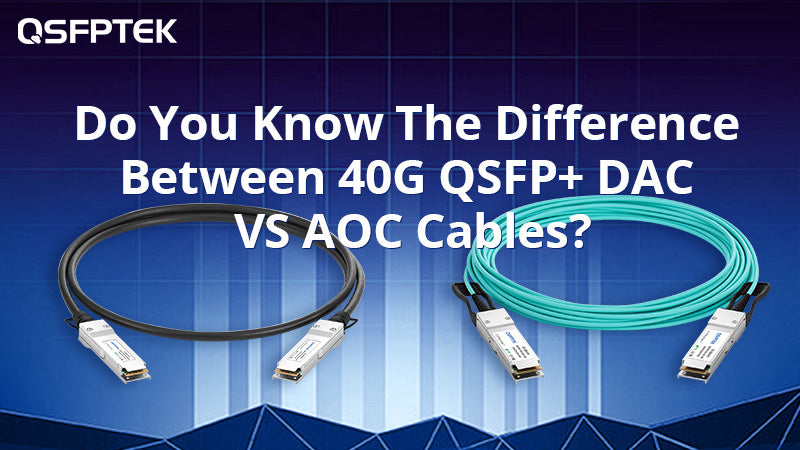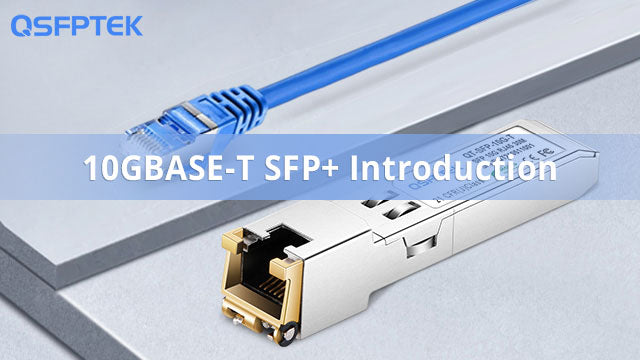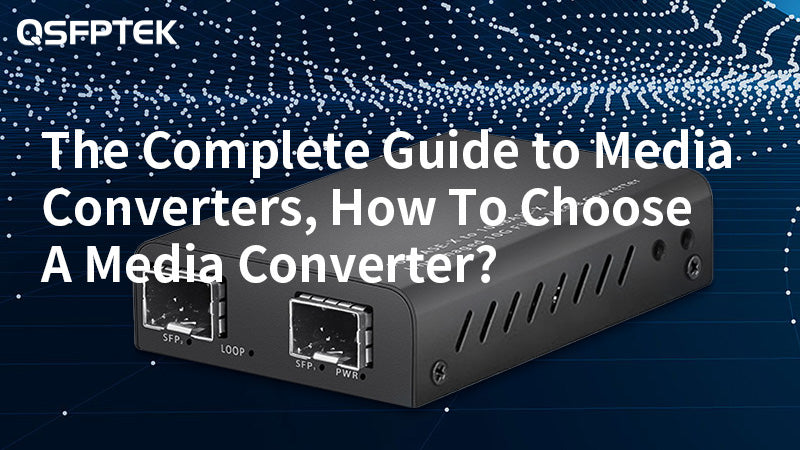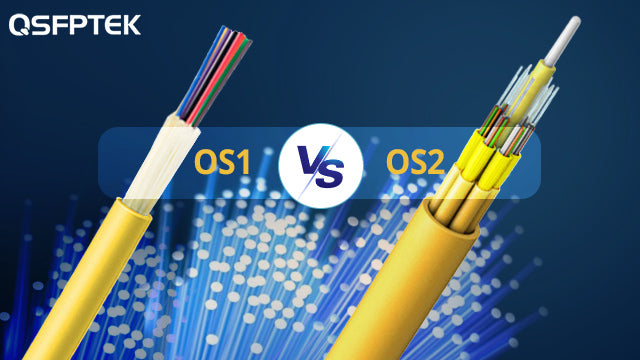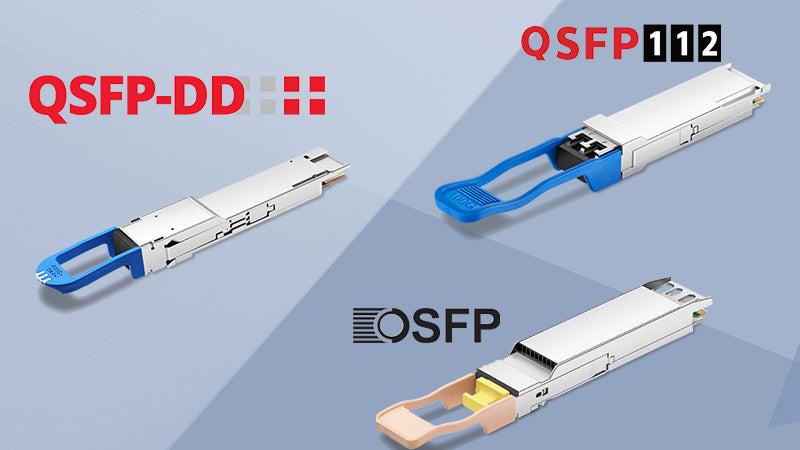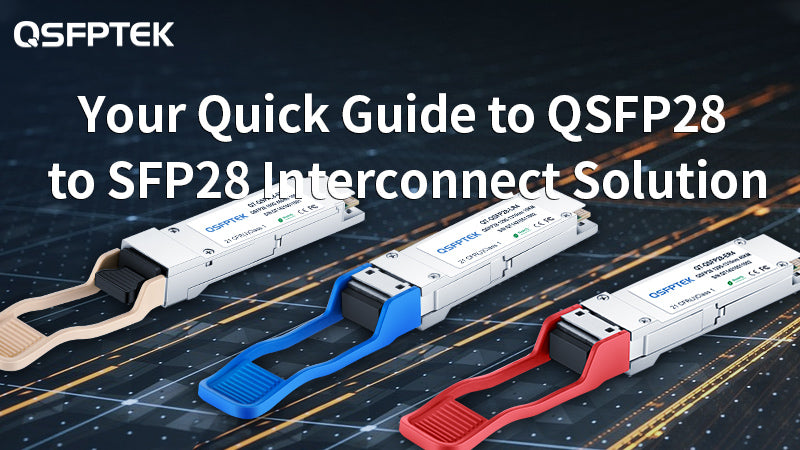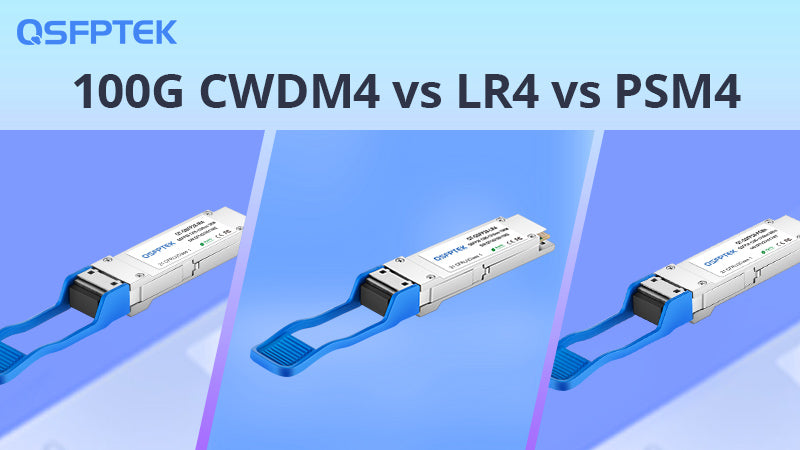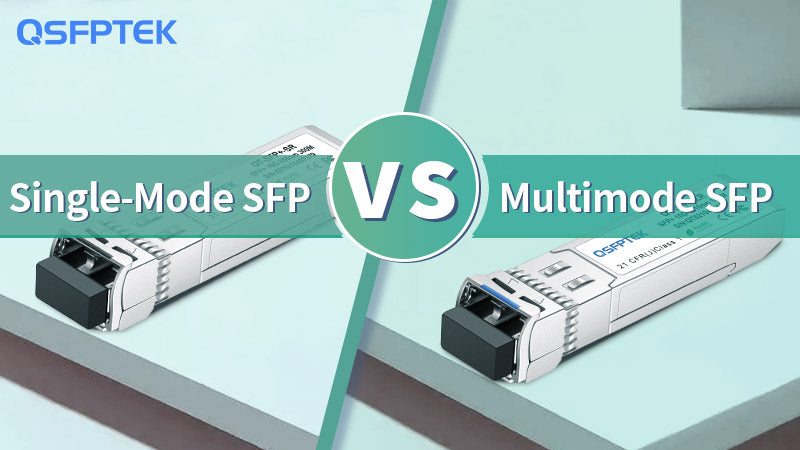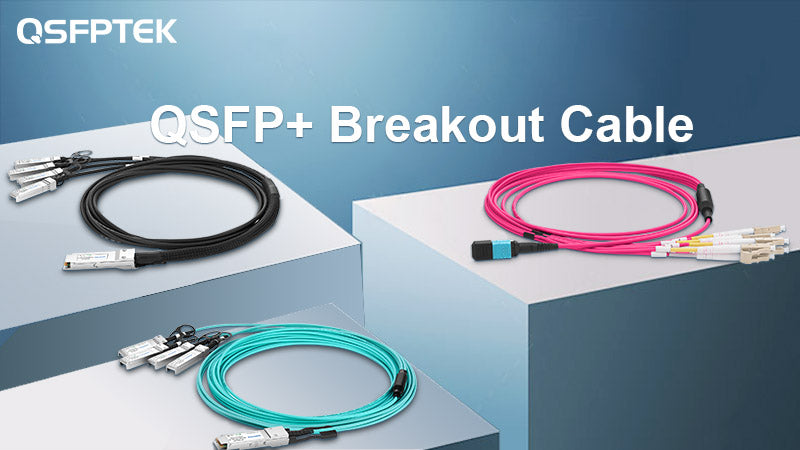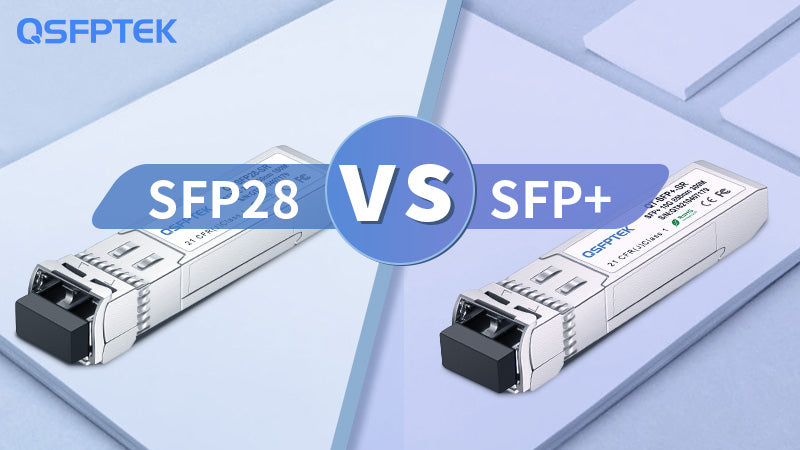Sidebar
Categories
Neueste Artikel
-
SFP Optical Transceiver Tutorial on Installation, Removal and Precautions July 18, 2022
-
PAM4 Modulation & PAM4 vs NRZ, How Much Do You Know? July 08, 2022
-
Advantages of Fiber Optic Cable Over Copper Cable June 30, 2022
Featured Products
-
Do You Know The Difference Between 40G QSFP+ DAC VS AOC Cables?
by ChouMoore onWhat Is QSFP Direct Attach Cable The Definition of QSFP DAC The QSFP+ DAC is an integrated high-speed Twinax cable that has a QSFP+ connector at both ends of the cable linked for bi-directional communication. The wire portion of the QSFP 40G direct attach cables includes silver-plated conductors and foam insulated cable, this Direct Attach Cable copper transmit electrical signals with a twisted... -
Everything You Should Know About 10GBASE-T SFP+ Transceiver
by L.Derek onEverything You Should Know About 10GBASE-T SFP+ Transceiver 10GBASE-T Explained In 1999, 1000BASE-T was defined by IEEE 802.3ab, which is the Gigabit Ethernet standard over copper wiring cable. 1000BASE-T enables the max transmission distance of 100 meters over unshielded twisted pair (UTP) Cat5 cable or better (including Cat5e and Cat6). With the arrival of 1000BASE-T, Gigabit Ethernet became a desktop technology and has been... -
The Complete Guide to Media Converters, How To Choose A Media Converter?
by ChouMoore onThe fiber media converter, also known as a media converter, is a common network device that provides enterprise customers and data centers with a flexible and inexpensive solution for converting Ethernet as well as any other communication protocol from copper (CATx/UTP) to fiber or fiber-optic connections. The media converter is typically used in pairs in MAN and LAN, where a fiber segment is inserted... -
Single-mode Fiber OS1 vs OS2: Differences, Chose Guide
by DerekL. onOptical fiber cable is the most widely used transmission media today, which has many advantages such as high bandwidth, long-distance relay, high reliability, small volume, lightweight, etc. It consists of two types, single-mode fiber type, and multimode fiber type. Multimode fiber type is generally used in short-range transmission. It includes 5 types, OM1, OM2, OM3, OM4, and OM5. Conversely, single-mode fiber is used in... -
QSFP-DD Wiki and Comparison of QSFP-DD vs OSFP and QSFP
by KevinLee onQSFP-DD, or QSFP56-DD, stands for Quad Small Form Factor Pluggable Double Density. Based on the design of QSFP, the form factor of QSFP-DD is identical to the previous QSFP+ and QSFP28. Yet it doubles the number of electrical interface lanes to 8 against 4 and provides the highest bandwidth in the QSFP cage system module. -
Comprehensive Tutorial of QSFP28 to SFP28 Interconnect Solution
by ChouMoore onAs the 100G QSFP28 devices connected in data centers continue to evolve and the need for higher speed data processing increases, there is a need for data centers to gain robust capabilities to have faster and more efficient transmission rates. Recent years have seen increasing interest in 25G SFP28 and 100G QSFP28 technologies with their ability to deliver efficient paths at high rates. Then,... -
100G CWDM4 vs LR4 vs PSM4, What Are the Differences?
by DerekL. on100G optical transceivers have been widely applied in data centers with the development of optical communication and market demand. In 2018, IEEE released the IEEE 802.3cd protocol and formulated the 100G Ethernet standard. Since then, 100g optical modules have quickly moved towards the commercial stage. 100G QSFP28 CWDM4, 100G QSFP28 LR4, and 100G QSFP28 PSM4 optical modules are three major high-speed interconnection options for... -
SFP Module Types: Single-Mode vs Multimode SFP
by KevinLee onSingle-mode and multimode SFP are two SFP module types that will work on different fiber types. This post focuses on the color coating, laser transmitter wavelength, transmission distance, and cost to dive into the differences between single-mode vs multimode SFP. -
QSFP+ Breakout Cable Connectivity Guide
by DerekL. onMany data centers are facing upgrading the 10G Ethernet network to 40G. 40G QSFP+ breakout cables and transceivers are ideal 40G high-speed interconnection products for 10G-40G migrating. This article will introduce three 40G QSFP+ breakout connectivity solutions including 40G QSFP+ breakout DAC cable, QSFP+ breakout AOC cable, and QSFP+ optical transceivers+MTP-4xLC breakout cable. Guide 1: QSFP+ to 4x10G SFP+ Breakout DAC(Direct Attach Cable) QSFP+... -
4 Differences Between SFP28 and SFP+
by DerekL. onSFP28 and SFP+ are identical in form factor, then what the differences between them. This article will tell. What is SFP+? SFP+ is referred to as an enhanced small form-factor pluggable, which is designed for 10-gigabit data communication applications. SFP+ optical module evolved from the GBIC (Gigabit Interface Converter) module and the SFP+ specification was first published in 2006. It is much smaller in...




















































































































